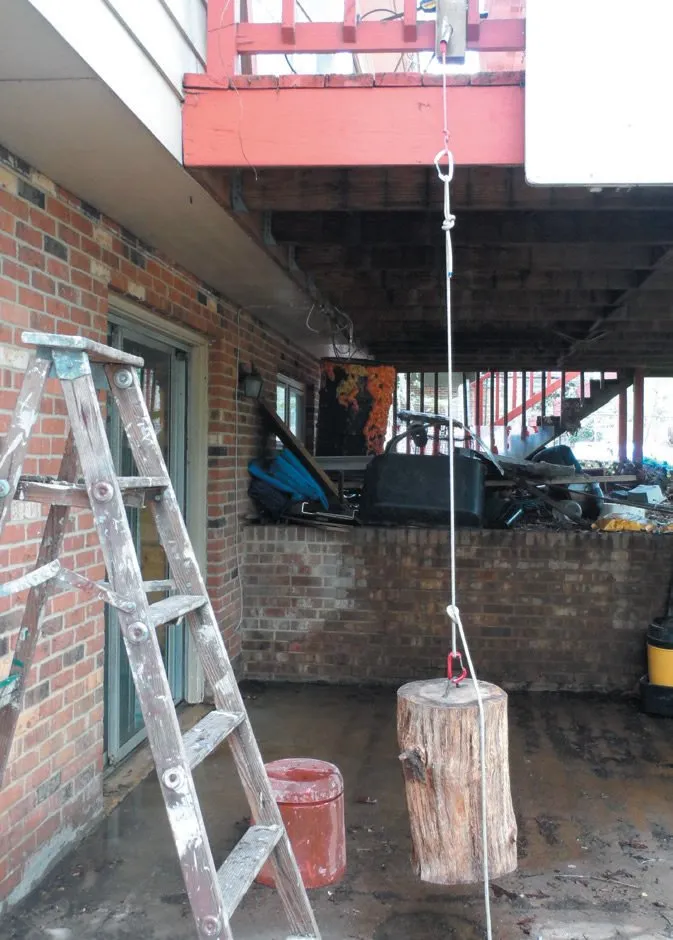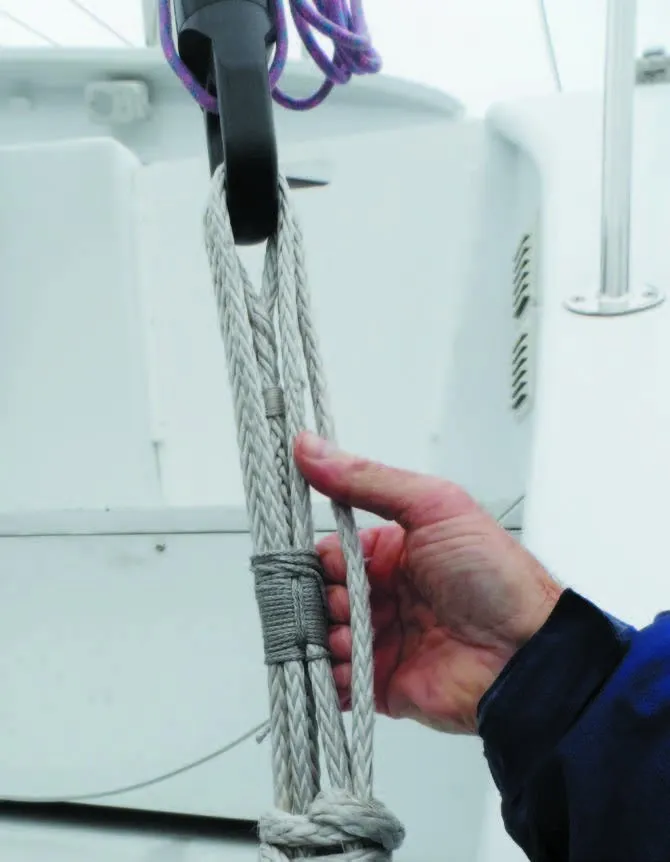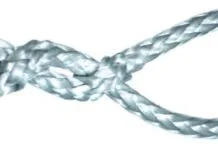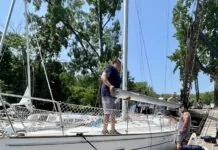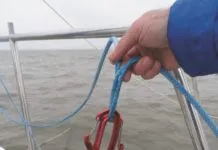Working with High-Tech Ropes
If you are working with low friction rings, sooner or later youre going to work with Amsteel and other high molecular polyethylene (HMPE) ropes, and that means learning to splice-in rings.
Un-Stepping the Mast for America’s Great Loop
As a family on a sailboat traveling on the Great Loop, our crew of four aboard Fika was a bit out of the ordinary....
Years Later, Mast Mate Still Riding High
Mast steps are a great help when going aloft, but they add weight where it hurts most (aloft), and halyards love to get stuck behind them. One alternative is the Mast Mate webbing ladder, which hoists on your mainsail track.
Adding a Polyester Cover to Dyneema Single Braid
Extremely low friction allows Amsteel and other high molecular weight polyethylene (HMPE) lines to run like lightening through low friction rings. Unfortunately, they also run right through cleats, jammers, and your hands. If a jammer did hold-and it wont-the load would probably exceed the capacity of any device that matched the lines tiny size.
Splice Failure Linked to Fatality
On the 4th of September 2015, Andrew Ashman was killed during an accidental jibe, when the boom delivered a fatal injury to the base of his neck. The boat, CV21 Ichor Coal, had been running in strong conditions, and yawing allowed the wind to get on the wrong side of the mainsail, as occasionally happens. A preventer was rigged, but a strop securing a low friction ring turning block near the bow failed, allowing the boom to cross the cockpit unrestrained. On such highly engineered boats, how did this happen?
Inspecting Rivets and Screws for Trouble
One of the interesting conclusions from our testing was the surprising strength among all of the test fasteners when loaded in the shear. Even old fasteners, as old as 20 years or more, can continue to offer good service in small spars if maintained reasonably well and engineered with an adequate safety margin.
A Riveting Report: Spar Fasteners
Every sailor eventually feels the pull to add hardware to their spars. Maybe a piece of hardware has broken off, or the fasteners look suspect. Or you perhaps you want to add mast steps, or a cheek block for external reefing.
DIY Rig Check
Here are two good examples showing the problems associated with the lower or deck level use of swage terminals for your standing rigging. Swaging is a process where tubular stainless steel fittings are essentially crimped onto rigging wire under high pressure.
Mechanical Terminal Pull Test
Swageless wire-rope terminals have long been a favorite piece of rigging kit among all kinds of sailors. These terminals are inspectable, reusable, and can be assembled with simple hand tools. But for all of their acknowledged advantages, data is scarce about their mechanical efficiency. How much, if any, do they weaken the wire rope they are attached to?
Swage Fitting Breaks Surprise PS Testers
During the first round of mechanical terminal testing, testers were surprised to see that wire failures were occurring at loads that were at least 10-percent lower than expected. The swaged-end fittings had been applied by a rotary swage machine, which is considered to be a very reliable way to form swaged terminals.
































